1992 was a pivotal year in my young life. That summer, “A League of Their Own” came out in theaters. As a kiiiiiinda chunky, shy eight-year-old, the Rockford Peaches showed me what it meant to be part of a team. For the first time, I saw how voluntarily breaking into a sweat could lead to some pretty fantastic things — things like friendships, fun, and confidence. And I craved all of it.
Sports help define us during characteristically challenging and transitional periods in our lives. They make us feel included as children. They help us build self esteem as teenagers. They give us something to be proud of throughout our lives.
As a field hockey player in high school, when I put on my jersey or went shopping for a new stick, I was proudly showing everyone who my people were. But it was so much more than that. It was also the bus ride to the game; the excitement and comradery in the locker room before we took the field; the pride of a well-played tournament; the lasting effect of a team that had just given it their all for one another.
I never imagined that it might not have been the same for every female athlete. Not anymore, anyway; not since Dottie Hinson and the All American Girls Baseball League showed the world and Tom Hanks that they belonged on that baseball diamond. This was the 21st century after all, and Title IX had legitimized the importance of women’s sports over thirty years ago. Everything was equal now. Right?
As we’ve seen all too often over the past few years, that is certainly not the case.
As a field hockey convert to the world of ball hockey, I have noticed a stark difference not just in the use of both sides of the stick, but in the way long-time players talk about their history in the sport. Field hockey is played predominantly by women in the United States. It’s not all that popular here, and if seeing Jamie Frasier playing the sexiest, kilted game of Scottish Highlander hockey imaginable in season one of Outlander didn’t popularize the sport for men here, then I think it’s ours for the long run, ladies. Because of this (all-too-rare) female dominance, we didn’t have to worry about not fitting into the sport because we were girls, or that our male counterparts would take over the locker room or dominate our time with the trainer. We had no male counterparts. So when I tried out for the USA Masters Ball Hockey Team at age 35 and began chatting with the other women at the camps, I was floored by the stories they had about growing up playing the traditionally male-dominated sports of ice and ball hockey.
Women’s ball hockey wasn’t a national sport when us “masters” were growing up. In fact, it wasn’t until 2007 that the United States had an official women’s team. Compared to the US Women’s National Soccer Team which got its start over 20 years earlier in 1985, our women’s ball hockey teams are still in their adolescence. The women who kicked off ball hockey on a national and international level as part of the 2007 World Championships team were a part of this sport before women were truly acknowledged as serious players. They broke the glass of the rink, legitimizing women in ball hockey so those of us who have since stepped onto the court can do so with a strong foundation.
The Ones who Broke the Glass
“Going into a locker room that’s not even yours to begin with is certainly like you’re entering the lion’s den.” Hilary Knight, US Women’s National Ice Hockey Team member
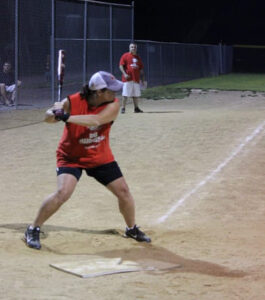
Terry playing football and baseball
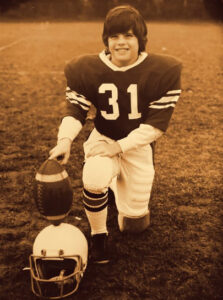 Growing up in a working class neighborhood of Philadelphia, ice hockey was never an option for Terry Ryan. But playing sports including football, baseball and street hockey with her older brother was much less cost prohibitive and required no parental rides to the rink. So she played with the neighborhood boys and picked up other sports in school from softball to field hockey. Then as a young mom, she began playing street hockey again with the kids in her neighborhood. That is where a fellow parent mentioned a women’s ball hockey tournament happening in Feasterville, PA.
Growing up in a working class neighborhood of Philadelphia, ice hockey was never an option for Terry Ryan. But playing sports including football, baseball and street hockey with her older brother was much less cost prohibitive and required no parental rides to the rink. So she played with the neighborhood boys and picked up other sports in school from softball to field hockey. Then as a young mom, she began playing street hockey again with the kids in her neighborhood. That is where a fellow parent mentioned a women’s ball hockey tournament happening in Feasterville, PA.
Terry took a chance and joined a random team that needed players. That chance paid off, and she discovered not only a reignited passion for the sport but an opportunity for something even greater. She thought she was just showing team spirit when she followed her teammates’ lead and decorated her stick with pink tape; as it turned out, she had just signed herself up to try out for the new women’s national team. This woman – who had been told a decade earlier that she would never play competitive sports again following a gruesome skiing accident – was soon playing on the first ever US Women’s National Ball Hockey Team at the World Championships in Germany.
“I was just so thrilled to be part of something that was bigger than me,” said Terry. “I didn’t play much in the first Worlds, but my goal was to be the best teammate possible. You don’t have to play to be a great team player.”
The success of that first national team led Terry to play for the next 15 years of her life, stopping only after a vicious car accident last July ended her career.
“My only regret was that we never got a gold, but I know the National team and the Masters team will get there.”
#
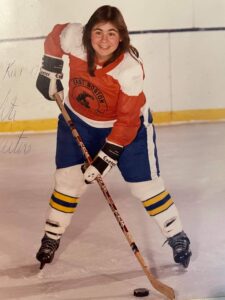
Karen in her youth ice hockey uniform in 1982
Karen Doria, another member of the 2007 Women’s National Team, also played the traditional version of street hockey growing up – taking over the pavement until a car came into sight, hurrying the nets out of the way, then setting them back up and getting back to to the game until the street lights came on and it was time to head home for dinner.
Karen’s love for hockey led her to join an ice hockey league at the age of 10; however, this was the 1980s, and girls playing ice hockey were rare. Because there was a girl on the team, her coach had everyone come dressed to the locker rooms ready to play — a rule that was meant to make things less awkward but instead led Karen to feeling like it was her fault the team had to change their behavior. Despite this awkwardness and the occasional hostility that came with being the lone girl in a “boy’s sport”, Karen was determined to keep playing. She continued for as long as possible, but once she entered high school, it was no longer an option.
“I tried to skate with the men,” Karen explained. “But it wasn’t generally accepted.”
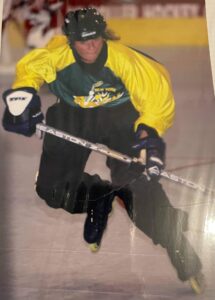
Karen playing roller hockey for NY Flash
Ball hockey had been a summer sport for youth hockey players where Karen grew up in Massachusetts in the ‘80s. As temps rose, rinks were melted down, and kids competed in ball hockey instead of ice hockey – the ultimate summer camp for the hockey-obsessed pre-teen. So as an adult who could no longer play her beloved ice hockey, Karen found a coed ball hockey league and picked that sport back up. Then in 2006, when Team USA Women’s Ball Hockey organizers held a convention and tradeshow sponsored by the International Street and Ball Hockey Federation (ISBHF), Karen showed up to the event and realized the opportunity to be part of that first Women’s National Team.
“We didn’t have a lot [back then], not a lot of places to play or that much awareness that the sport even existed,” said Karen. “On the 2007 team we had women 18 to 40 years old. Now you have U20, the National team, and Masters. We were athletes but we didn’t necessarily have the knowledge; today they seem to come right out of the hockey womb, stick and all.”
#
Nancy O’Halloran grew up in a hockey family in Massachusetts. Her father coached, reffed and ran leagues, and her two brothers played. But when Nancy expressed her desire to play too, her mother put her foot down.
“My father was all about it, he wanted [my sister and me] to play ice. But my mother thought it was too rough for us girls,” Nancy explained.
She practiced on the ice with her father’s teams and played street hockey with the boys growing up, but she wasn’t allowed to be on the team. Disappointed yet always determined, Nancy decided to transition to field hockey in high school despite being left-handed in a sport where sticks are only made for righties. After an initial learning curve, Nancy excelled, eventually playing field hockey and lacrosse in college.
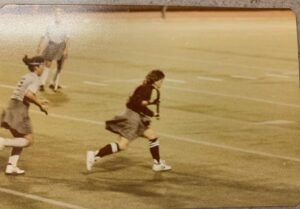
Nancy playing field hockey for UMass
Following her college graduation, Nancy found her passion for hockey hadn’t faded, so she began playing in a women’s ball hockey league – a rarity at that time – in Hingham, MA. Eventually, she started up a travel team out of Hingham. Nancy had difficulties finding female ice or ball hockey players, so to fill out the team, she began recruiting women who had played field hockey, soccer, and other sports and taught them to play ball hockey. While playing in the 2006 North American Ball Hockey Championships, she heard that the United States would be sending a team for the first time to the upcoming Women’s Ball Hockey World Championships in Germany. Nancy knew she wanted to be a part of that team.
“The tryout process for the 2007 team was intense. Lots of travel and evaluations,” said Nancy. “They were bringing people from all over – the Northeast, Chicago, California – it was cool to see so many women in a cross-section of the country all interested in the sport.”
#
Team USA goalie and co-founder of UWBHF, Alessandra (San) Glista, began playing ball hockey in youth and coed leagues around the age of 12. As a competitive soccer player growing up, the transition to ball hockey goalie felt instinctual to San. Despite being by far the youngest player in the adult coed league, she was relieved to be playing her favorite sport with other women in the mix.
Sophomore year of high school, San decided to try out for the boys’ ice hockey team — despite never having skated before. To prove she was serious about playing, she saved up babysitting money to pay for second-hand equipment and learned how to skate with the help of a friend’s father. She made the team but didn’t see a lot of playing time, so her coach encouraged her to sign up for a girls’ club team to get more game experience. She followed his guidance and played for both hockey teams throughout her high school career. Senior year, in addition to being named one of the captains of her school’s ice hockey team, her girls’ club team ended up winning the Massachusetts State Championships.
Since her high school team wasn’t used to having women play, San’s locker room was the women’s restroom at the rink, with it’s sticky, candy-coated floor and the awkward disruptions as she changed during public skate — an experience unlike that of the boys on her team who had their own locker room. And while her parents were always supportive of her playing, not everyone was, and San wanted to prove to herself and to all of the haters that she could do it.
“I had bruises all the time, but I never wanted anyone to see them and see any weakness,” she said.
After playing in one of her high school games, the father of one of her opponents offered to coach her in net. She attributes her skills as a goalie to his coaching and continues to work with him to this day. Mr. B. (Thomas Bricklemyer), or the “Goalie Whisperer” as he is lovingly referred to by the many Team USA and other players he has worked with throughout the years, made her into the best skater and athlete she could be.
“I can’t emphasize the value of having really great coaches who are willing to invest their time,” San noted.
In college, San started playing roller hockey and played in the 2003 Women’s Roller Hockey World Championships in the Czech Republic, helping to bring home the gold for the USA. After college she played on Team Bauer, traveling all over the country for tournaments. Then in 2006, San played in her first ball hockey tournament in Philadelphia.
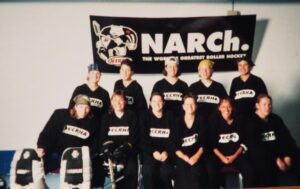
Team Bauer Roller Hockey (San is pictured first row, far left)
The Ones Who Supported The Glass Breakers
In the early days of ball hockey, there were limited opportunities and events, not as many tournaments, and not enough players. There also weren’t as many people who took time to teach women.
“A lot of times, someone’s husband would just jump on the bench,” San explained. “So it’s evolved. There’s a lot more exposure and opportunities for women now.”
Those opportunities grew because of the people who put in the effort in those early days, people like Jamie Cooke and Gwen Lemieux.
Jamie’s list of titles in the ball hockey world runs deep: founder of the first women’s World Cup, founder of Cool Hockey Events, founder of the USA Ball Hockey brand (unrelated to USA Ball Hockey, the official organization for the sport in the US), General Manager of the 2007 Women’s National Team, Founder of the USA Master’s program, General Manager of the USA Men’s Masters team from 2013-2016, coach, teammate, and more. Jamie has even been called the Godfather of Women’s Ball Hockey in the United States.
Jamie had played ball hockey during the sport’s heyday in the 1990s. Dreaming of returning ball hockey to its former glory, he founded Cool Hockey Events in the early 2000s. Through Cool Hockey, he ran tournaments, starting with men’s and co-ed, and then expanding to women’s divisions as more females got a taste of the sport through co-ed and requested their own competitions.
In their first North Americans tournament, there were 12 women’s teams, and it wasn’t long before Jamie was asked to put together more tournaments just for women. Because there still weren’t many women’s teams in the US at that time, he challenged Canada’s teams to come down for a tournament. It was such a success, he was asked to run a similar tournament to coincide with the upcoming Men’s World Championships in Pittsburgh. Women’s teams ultimately came to play in this World Cup tournament from Boston, Philadelphia, New York, and Washington DC, in addition to three Canadian teams and teams from Switzerland, Germany, Slovakia and the Czech Republic.
After the success of that tournament, the ISBHF asked Jamie to get more involved, so he started USA Ball Hockey as a nonprofit within Cool Hockey Events. There hadn’t been any interest from the sport’s national organization at the time, American Street Hockey Institute (ASHI), to field a women’s team for the upcoming Ball Hockey World Championships in Ratingen, Germany, so Jamie lobbied to field a team and was given the green light.
Jamie had the intimidating task of rebuilding the women’s program from the ground up, and a major component of building a strong women’s team was finding a strong female coach to guide and mentor them.
Longtime ice and ball hockey player and Canadian women’s ice hockey coach, Gwen Lemieux, was a proponent for women’s ice hockey in an era of inequity, often becoming involved in politics just to obtain ice time for the girls. Despite the difficulties for both female players and coaches in the sport, Gwen earned her High Performance coaching level and was an assistant coach for Team BC in ice hockey at the1999 Canadian Winter Games. She then led a Canadian contingent in ball hockey to gold as the Head Coach in the 2005 World Cup in Pittsburgh, PA.
At the World Cup, Gwen was reminded of the first World Championships for women’s ice hockey in 1990 — an observation that led to deep conversations with Jamie Cooke around the future of the sport.
To Gwen, this was the true start of women’s ball hockey.
The World Cup in Pittsburgh spurred the ISBHF to allow the women to attend the 2007 World Championships. Due to the process in place at that time, Gwen did not begin her international coaching with Canada, so Jamie Cook contacted her to see if she would coach Team USA.
Together, Jamie and Gwen determined the strategy for this inaugural women’s program. It was to run like an Olympic program. There would be a tryout process, team camps, proper uniforms, clothing kits, and funding from sponsors.
“You had to be dedicated,” Jamie explained. “There were rules, protocol. It was strict. Everyone bought into it to represent the United States in Germany. Tryouts aren’t perfect, but people have to come and show up and make the team. We had over 200 women try out [in 2006], and we had 30 players including five alternates for that first team.”
That original 2007 USA team ultimately ended up a goal away from winning a bronze medal — an incredible feat for a new team.
“We had field hockey, softball, soccer players…we had a learning curve compared to the players from the other countries, yet we were competitive with every team except maybe Canada,” Jamie stated. “That Women’s National Team really started it all. The men’s team watched how we ran it and picked up how to do it. That 2007 team were the leaders of how to go about a national team.”
“You can’t expect a lot in a first World Championships,” said Gwen. “You have to learn and enjoy the experience, make it fun, and compete the best you possibly can, and that’s what they did.”
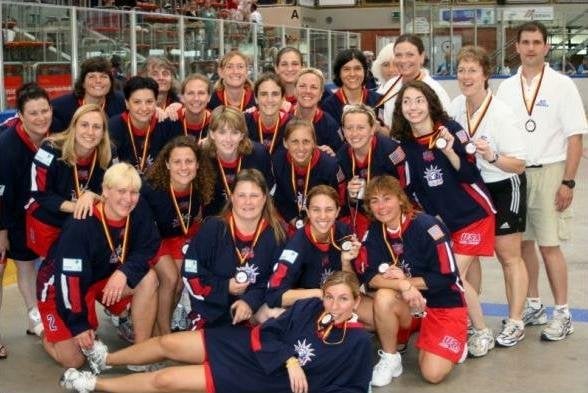
Team USA Ball Hockey 2007
The Road to Respect
While female athletes have been proving themselves on the rink for decades, the road to respect has never been equally paved for women in international ball hockey.
“In 2007, we were grateful for the opportunity to play, but [the tournament organizers] didn’t even plan a bronze medal championship game for the women because there was no floor time,” Gwen detailed. “The women’s teams had to pick up and move out of their dressing rooms nine times throughout the tournament, but the men always stayed in the same place and never had to move their gear. We were like second class players. After each game or practice, the trainers of all of the women’s teams had to pack up and move again.”
Organizers tried their best to avoid issues in the Czech Republic in 2017. Thankfully the facility chosen allowed for the women’s teams to be set up in one locker room for the duration of the tourney, but there were still fundamental problems with some basic operations.
“The men’s Player of the Game awards were different from the women’s. We are all athletes, so present the same awards,” said Gwen. “And they announced video coverage of our games at the beginning of the tournament, but the DVD’s of the women’s games were never delivered as promised at the coach meeting. Those DVDs came out five days later; they basically didn’t do it until we asked for it. There was also nowhere to wash our team jerseys — we had to go to a dry cleaner for a huge fee — but the men somehow had them done.”
Despite what one would hope would have been lessons learned, the 2019 Kosice, Slovakia, World Championships were only too similar: organizers turned off the lights for the women’s games in the arena but turned all the lights on when the men were playing. Gwen recalled that when Team USA and the Czech women were set to play, the lights were not fully operating. This enraged the head coach of the Czech team, and his protest caused a major delay in the start of the game. His dismay didn’t matter; the lights were not turned on.
THE LIGHTS.
With the delay of the 2021 Ball Hockey World Championships due to COVID-19, perhaps the extra time will allow organizers to ensure parity for all athletes — or at least full use of the electricity.
When interviewing the subjects of this article, a common element came across. The women were happy just to be able to play. Despite these clearly sexist experiences in international competition, the term “grateful” came up several times throughout our conversations. They were grateful to tournament organizers for allowing them to compete. They were grateful for the experience. They were grateful just to be there.
We cannot be content with being grateful for being given something we have earned.
Female athletes have constantly had to run, jump, play, hit, and vault their way up this equity hill, and unfortunately this is no different for women in ball hockey. We have come a long way in just a short time, and we can thank these first players, coaches, and founders of the sport in the United States for leading the charge. But we are not there yet.
“I think there are still areas where we’re not taken seriously,” said Nancy. “There’s still a long way to go. Some guys still think we can’t play. We are still trying to climb that wall and that barrier. But the more we continue to grow the sport for women, the more it’ll be accepted.”
* * * * *
In Memoriam
John Goerner, 2007 National Team Assistant Coach
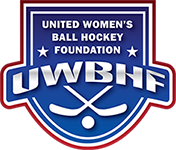

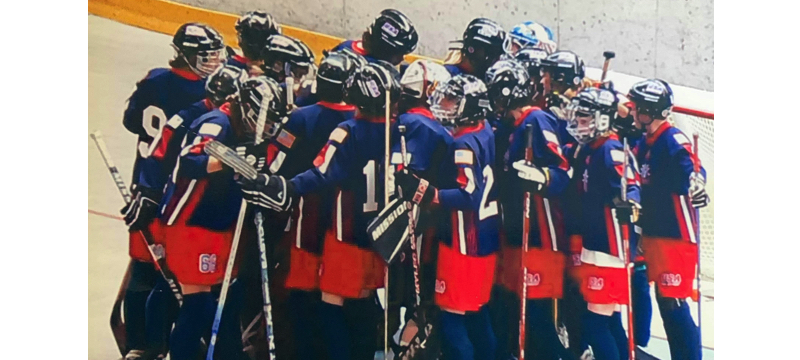
[…] Ball hockey has given so much to so many of us, and most of all, it has brought us together. National Girls and Women in Sports Day was established to recognize those who are using their voices, talents, and opportunities to create unbiased access to sports for women and girls, and we would like to thank these and the other fierce leaders of the women’s ball hockey community for all of their efforts over the years. We have come a long way. […]